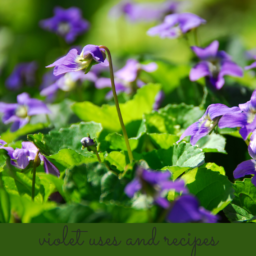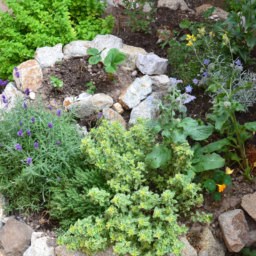Ramp Pesto
After posting photos of my ramp foraging and subsequent pesto on Instagram, I had a few requests for the recipe.

It’s really very basic, but I find the key to making ramp pesto taste great and not too garlicky (in my opinion) is to first blanche the leaves for about 2 minutes. I have also sauteed them successfully before blending in the past. Some people mix the ramps with another herb to reach a desired taste, but they’re great on their own, too.
My simple recipe is to combine the following in a food processor until smooth:
- 6 oz ramp leaves (not bulbs), cut into smaller pieces and then placed in boiling water for 2 minutes. Strain them out.
- ¼ cup olive oil
- Heaping 1/8 cup pine nuts or sunflower seeds (you can experiment with toasting them first, too!)
- Optional: ¼ cup Parmesan cheese (I’m dairy free right now ant it’s still delicious!)
I have a slightly different recipe that I posted on my old blog here and one that also involves incorporating oregano here.
However you enjoy ramps, please make sure that you are following sustainable harvesting guidelines. The United Plant Savers has ramps labeled as an at-risk species and it is very important that we don’t overharvest these delicious harbingers of spring, especially by taking too many of their roots. Read the full article about how to sustainably harvest ramps, and make sure to follow these guidelines set forth by UPS:
Sustainable Harvesting Practices:
- ONE LEAF PER PLANT: Harvest only the leaves, and leave some ramps fully intact. Rather than cutting off all the leaves from a bulb, take only one leaf per plant. This will leave a leaf for photosynthesis, allowing the plant to continue to grow and reproduce (without any leaves, the plant could go into dormancy). Digging up whole ramps not only reduces ramp population and prevents reproduction, but a disturbance to the soil disrupts its ecology and lets invasive plants become established.
- LEAVES ONLY PLEASE: Maintaining our ramp supply will require a transition to a “leaves-only” approach. Ask your ramp vendor to consider changing their practices to those described above so that ramps will grow for years to come. Also, consider that we need to compensate responsible harvesters fairly for maintaining the growth of ramps in their region by paying a price for the leaves as if the root is still attached.
- GROW THEM: We can continue to enjoy ramps while allowing them to proliferate in the wild. Ramps can be cultivated, either by growing plants from seed or by transplanting bulbs.

Ramp stands can look so very prolific, and yet when a plant takes 5-7 years to reach maturity it can easily be wiped out if not treated respectfully. If you do want some of the bulb, consider cutting off the rootlets at the bottom and placing those back in the ground to regenerate.
You may also consider trying some of the Ramp Salts I carry from another local herbalist, Earth in a Bottle. Check them out here.
What’s your favorite way of enjoying this green spring gift?



